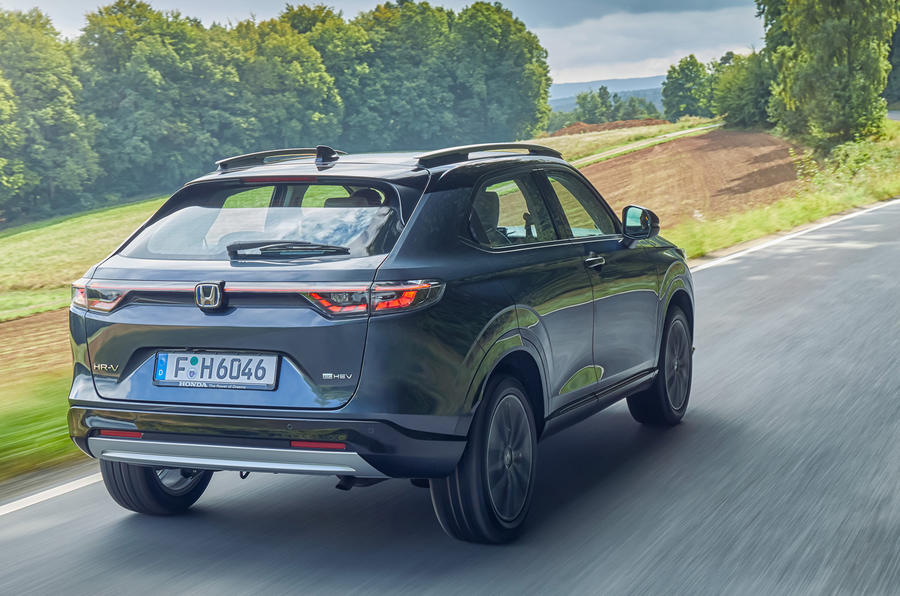What is it?
Honda’s press blurb for the new generation HR-V reads as though the company has been paying attention to reviewers’ and customers’ clamour for cars that don’t hit you over the head with technology. It makes much of its ‘Man-Maximum, Machine- Minimum’ design principle, which sounds like a bad Google translation, but it is supposedly the “belief that the purpose of technology and design is to serve the needs of the driver and passengers”. Amen to that.
It doesn’t mean that this is some sort of back-to-basics Suzuki Jimny competitor, though. For starters, the new HR-V is hybrid only, like its Honda Jazz hatchback sibling. It uses essentially the same set-up, but with a bigger battery and 21bhp more to cope with the heavier, taller body. That means a 1.5-litre Atkinson-cycle four-cylinder petrol engine, and two electric motors giving a combined output of 129bhp and 187lb ft.
As in the Jazz and the Honda CR-V hybrid, the engine usually just drives a generator to keep the battery topped up while the electric motors drive the wheels, but when full power is needed, it can drive the wheels directly through a single-speed ’box. The system will switch off the electric motors when cruising, because an engine is more efficient at high speed.
Inside, there is plenty of tech, too. A 9.0in touchscreen and 7.0in digital gauge cluster are standard, and the suite of active safety systems now has all the features expected in a modern car. Even the air vents are clever. Yes, the air vents. In addition to the usual centre and corner air outlets, there are L-shaped vents at the edges of the dashboard, which can generate a curtain of air to insulate the cabin from the hot or cold windows and create a vortex in the cabin that provides air flow without blasting air directly at the occupants’ faces.
Honda’s ‘Magic Seats’ make a return, too, in the HR-V. As the fuel tank is under the front seats, which are 10mm higher than in the outgoing model, the rear seat cushions can be flipped back to create a tall load space that easily houses something like a bicycle. The rear seats have been moved 30mm further aft to create very generous leg room, although that does come at the expense of boot space, which measures just 319 litres. The HR-V hasn’t really grown, but it was already a deceptively large car, more comparable in length to the Renault Arkana and Toyota C-HR than to the Renault Captur or Yaris Cross, and wider than all of them, which helps the spacious feel.
With Honda having thrown the digital kitchen sink at the new HR-V, how much of that ‘Man-Maximum, Machine-Minimum’ rings true? A fair bit, actually, because it’s an intuitive, undemanding car to drive.

































Add your comment